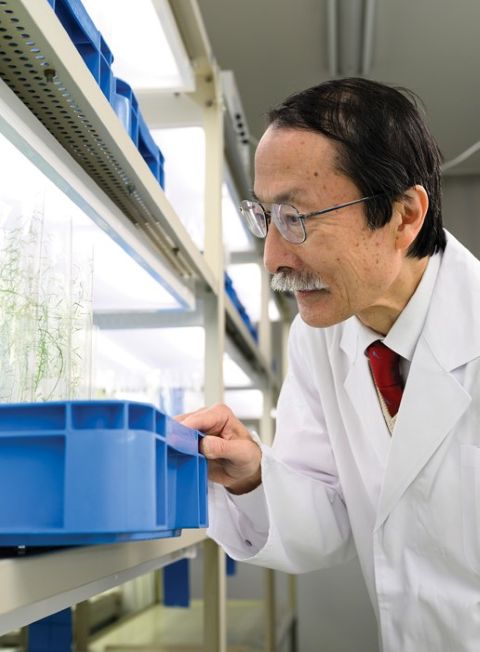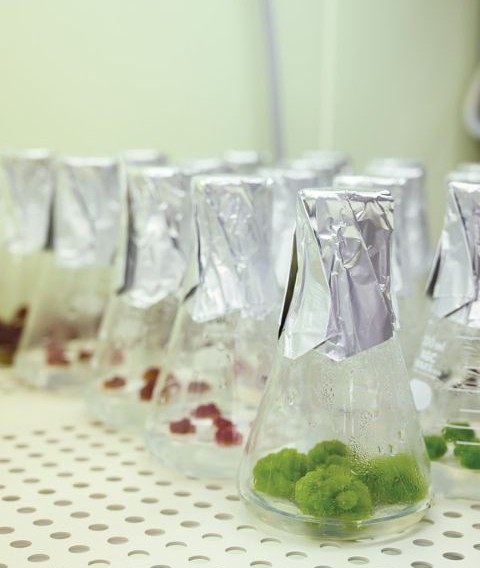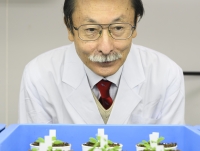Jun. 5, 2025
Curator of experimental plants
Masatomo Kobayashi—who oversees a collection of more than 850,000 different plant materials—focuses on providing high-quality research models.
Masatomo Kobayashi, Unit Leader
When the RIKEN Bioreource Research Center (BRC) was founded in Tsukuba, Japan, in 2001, plant scientist Masatomo Kobayashi jumped at the chance to join its ranks, becoming the director of the experimental plant division. Under his 24-year watch, this division has grown into a vast complex of greenery and other resources, featuring more than 850,000 plant materials, from model plant strains to DNA and cellular materials.
The BRC’s collection, especially its extensive holdings of Arabidopsis—a common model plant used for genetic, physiological, and biochemical studies—has become a key resource for researchers worldwide. Anyone can request plant samples, and up to 3,000 resources are sent out annually by just the experimental plant division. Roughly 20% of these requests come from overseas.
“We stock many lines unique to our collection—such as those contributed by Japanese researchers and wild-type plants found only in Japan,” Kobayashi adds. Diverse holdings are crucial because so many plant varieties, both wild and domesticated, provide important solutions to the challenges posed by climate change to food production, Kobayashi explains.

Take rice, for example—a Japanese staple. People might recognize the short-grain japonica and long-grain indica varieties. But within these groupings are strains that respond very differently to heat, cold, drought and disease. These differences in resilience hold important clues to creating crops that can survive the environmental changes that accompany global warming.
Kobayashi began his career as a plant chemist studying rice hormones. Later, he shifted focus to Arabidopsis, which is much faster to study, he explains—it yields seeds in three months, about half the time of rice.
Now Arabidopsis is a key plant resource at the BRC. For two decades, Kobayashi’s teams have also developed other fertile and hardy model plant resources.
Japan can’t compete with places such as the United States in terms of bioresource facility scale, says Kobayashi, but large centers with varied resources often lack the selective breeding capabilities to produce plants with, for example, efficient germination, which speeds up experiments. So the BRC focuses on these types of qualities.
Kobayashi finds great satisfaction in his team’s resources being used to address pressing issues, such as food security and climate change. “Those research fields are very active,” he notes. “And I strongly believe science should help people flourish and contribute to sustainability.”
But plant research is also constantly evolving, he says. The BRC’s teams must continually assess research trends and evaluate how to cultivate resources to serve the plant research community in the future. “Our work is never done,” Kobayashi says.

The experimental plant division provides sterile plant cell cultures to a wide range of researchers, including those studying cell biology and cell engineering. Most of these cultures have lost the capacity to become whole plants. © 2025 RIKEN
Rate this article

